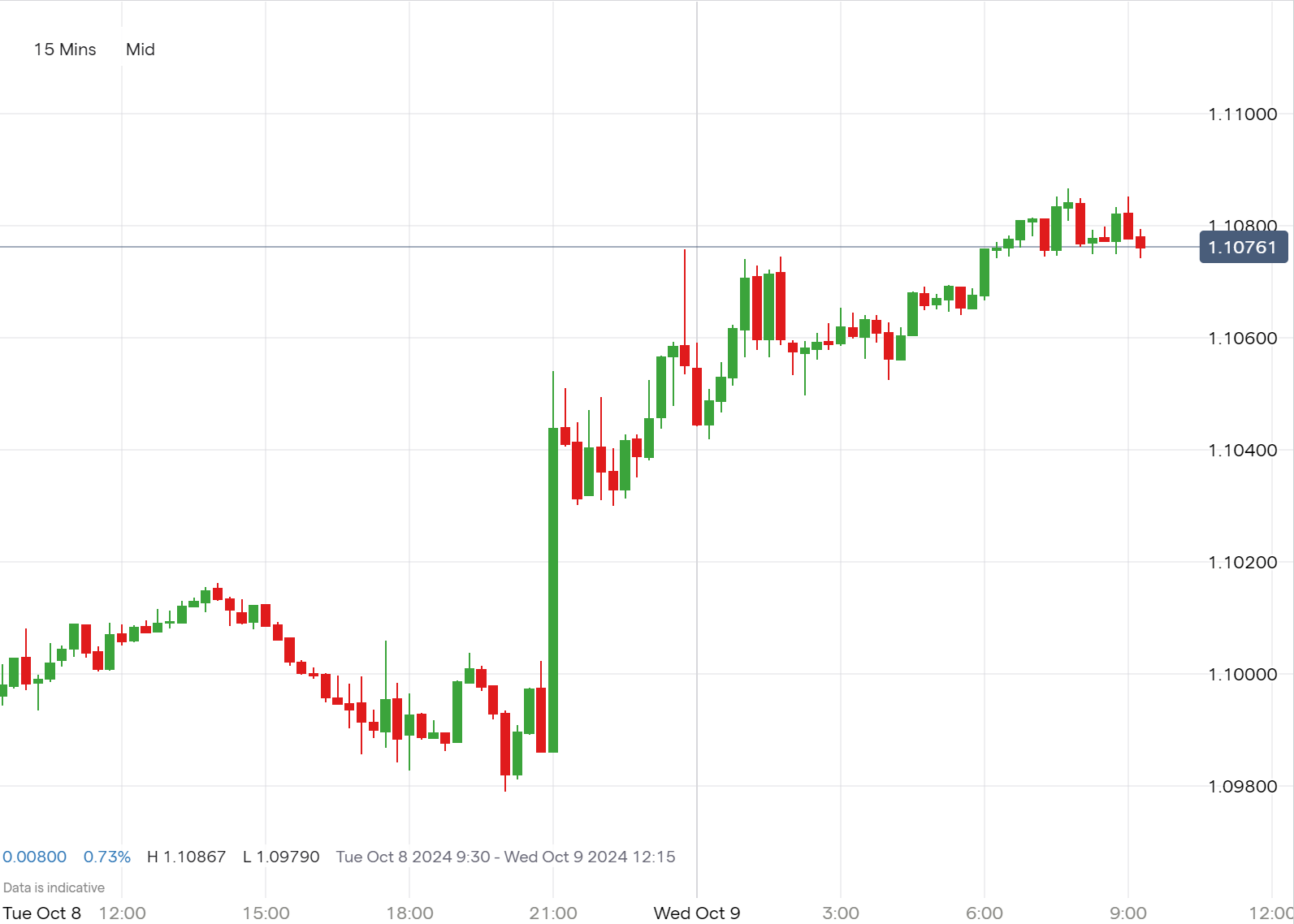New Zealand dollar collapses after 50 bps cut from RBNZ
Explore how RBNZ rate cuts impact NZD/USD, with kiwi facing pressure amid a strong USD and potential further easing. Key factors include interest rates and US economic data influencing forex strategies.

Key Points
- RBNZ cuts interest rates from 5.50% to 4.75%
- NZD/USD fell over 1% to below 0.6100 after RBNZ decision
- AUD/NZD trading near 1.1080, close to multi-year highs
- 87% chance of 25 basis point cut by US Fed in November
Reserve Bank of New Zealand Cuts Interest Rates 50 bps
The Reserve Bank of New Zealand (RBNZ) has cut interest rates by 50 basis points, marking the second consecutive reduction, which brings the rate from 5.50% in August to 4.75%. This move was anticipated, but the market was surprised by the RBNZ's dovish tone pointing to additional cuts in the near future. Such signals suggest that the central bank is prioritizing economic support, potentially impacting the New Zealand dollar's (NZD) attractiveness to investors. Lower interest rates often lead to decreased yields on investments denominated in the affected currency.
NZD/USD Falls Below 0.6100
Following the RBNZ's rate decision, the NZD/USD pair fell more than 1%, slipping below the 0.6100 mark. The kiwi had previously traded as high as 0.6370 against the US dollar at the end of September, but October has seen a bearish trend for the commodity currency, with a drop of around 300 pips to approximately 0.6075. The pair experienced lows of 0.5800 in the past year, and its recent movements reflect ongoing volatility.
NZD/USD price history

New Zealand vs Australia: Dollar Dynamics
The AUD/NZD pair is currently trading near 1.1080, close to multi-year highs above 1.1100, within 100 pips. Historically, the Australian dollar (AUD) and the New Zealand dollar (NZD) have shown a positive correlation, resulting in the currency cross trading within a range of 1.0600 to 1.1100 over the last year. This attractiveness of the pair comes from its relative stability, coupled with its approach to key resistance levels.
AUD/NZD price history

What's Next for NZD/USD?
The New Zealand dollar (NZD) is navigating a complex landscape shaped by domestic and international factors. The RBNZ's dovish outlook suggests further rate cuts could diminish the NZD's appeal due to reduced yield attractiveness. Internationally, the NZD's weakness against the strong US dollar reflects a broader bearish trend. Upcoming Federal Reserve decisions in November, alongside robust US economic indicators like job growth and retail sales, could maintain USD strength. With an 87% chance of a 25 basis point cut and 0% for a 50 basis point cut, drastic monetary easing is less expected. Traders should watch both New Zealand's policies and US economic data to assess future NZD/USD movements.
How to trade NZD/USD
- Open an account to get started, or practice on a demo account
- Choose your forex trading platform
- Open, monitor, and close positions on NZD/USD
Trading forex requires an account with a forex provider like tastyfx. Many traders also watch major forex pairs like EUR/USD and USD/JPY for potential opportunities based on economic events such as inflation releases or interest rate decisions. Economic events can produce more volatility for forex pairs, which can mean greater potential profits and losses as risks can increase at these times.
You can help develop your forex trading strategies using resources like tastyfx’s YouTube channel. Our curated playlists can help you stay up to date on current markets and understand key terms. Once your strategy is developed, you can follow the above steps to open an account and get started trading forex.
Your profit or loss is calculated according to your full position size. Leverage will magnify both your profits and losses. It’s important to manage your risks carefully as losses can exceed your deposit. Ensure you understand the risks and benefits associated with trading leveraged products before you start trading with them. Trade using money you’re comfortable losing.
